“The Galapagos Islands are probably the most famous wildlife-watching destination in the world. And no wonder – it’s almost impossible to exaggerate the sheer spectacle of the place that provided inspiration for Charles Darwin’s ground-breaking theory of natural selection.” So said Mark Carwardine, a British zoologist, environmentalist, presenter, nature photographer and award-winning writer.
Sailing, as we do, three luxury expedition yachts around the Galapagos archipelago, we are well aware of the magnificence of these islands and the unique hold they have on so many who have visited.
With that in mind, we have always sought to do our bit in protecting the islands for generations to come, supporting a host of conservation programmes and organisations dedicated to preserving the delicate ecosystems that make the Galapagos such a unique spot and one of the planet’s true nature-based destinations.
We are particularly proud of our ongoing collaboration with the Charles Darwin Foundation, an international non-profit organization devoted to scientific research and preserving the terrestrial and marine environment and biodiversity of the Galapagos archipelago.
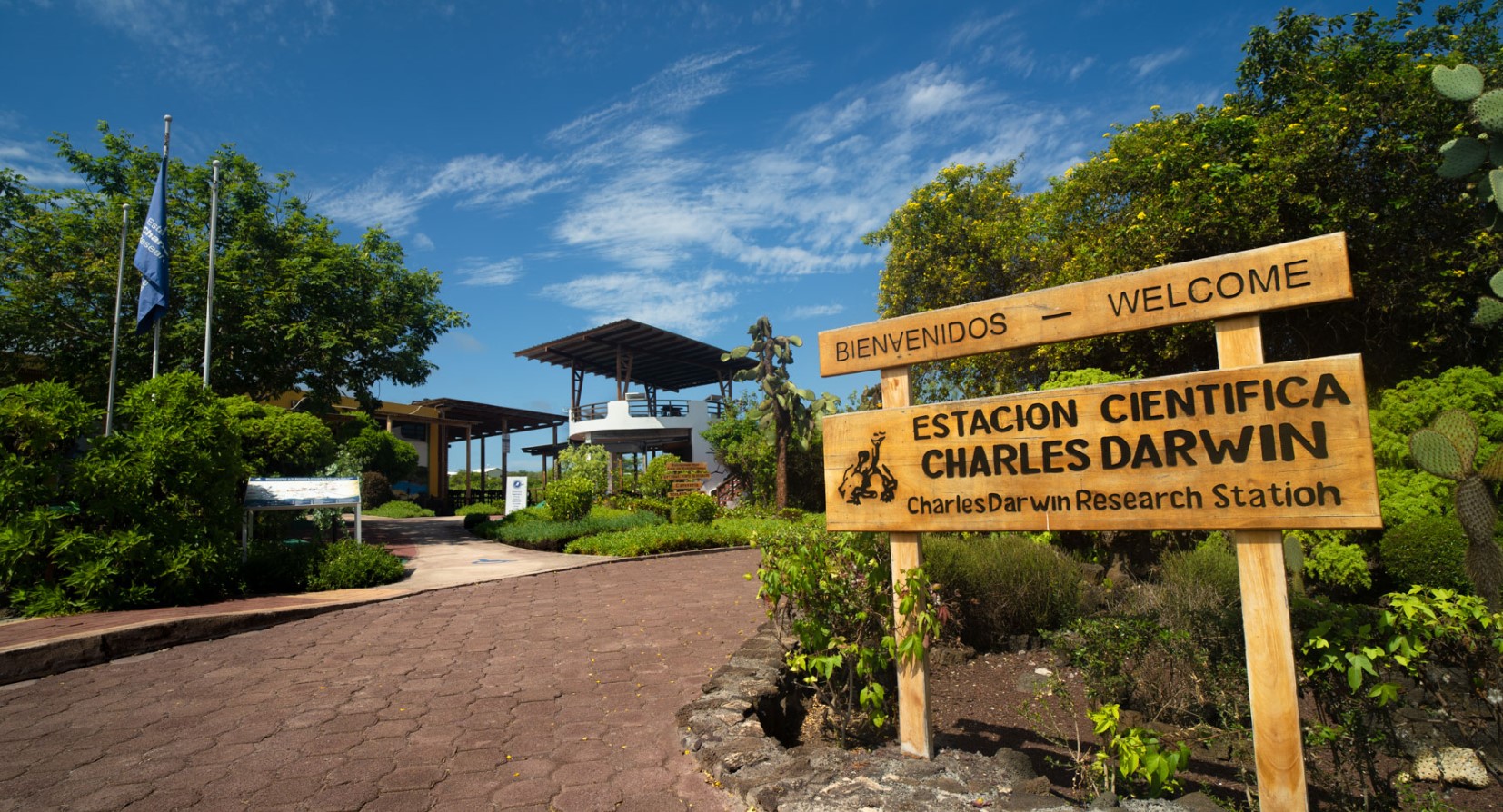
In November 2022, Ecoventura donated a 7-night cruise for 20 guests to charter our luxury yacht Theory. This was the first major donor cruise since the pandemic, made possible by support from the Gordon and Betty Moore Foundation and Ecoventura. Representatives from the Wyss Foundation, Bezos Earth Fund, Gordon and Betty Moore Foundation, and a major anonymous donors were on board. Following the cruise, the Moore Foundation and Bezos Earth Fund generously pledged a $2 million initial investment in the CDF’s Deep-Sea Research Program, which will pave the way for the establishment of a regional hub for deep-water research based at the Charles Darwin Research Station.
The Charles Darwin Foundation (CDF) was formed in 1959 and to this day plays a leading role in conservation efforts in the Galapagos. Through a partnership with Ecoventura, who in 2017 established the Galapagos Biodiversity & Education for Sustainability Fund, it has raised $179,000 annually, to support a number of important projects to benefit conservation and education, some of which are outlined below.
RESEARCH PROJECTS
Sea Turtles on Isabela Beach
The CDF worked closely with the community of Isabela Island with support from the Galapagos National Park Directorate (GNDP) in 2022, expanding its remit to monitor the green sea turtle population and assess the impact of climate change on the turtles in Playa Grande.
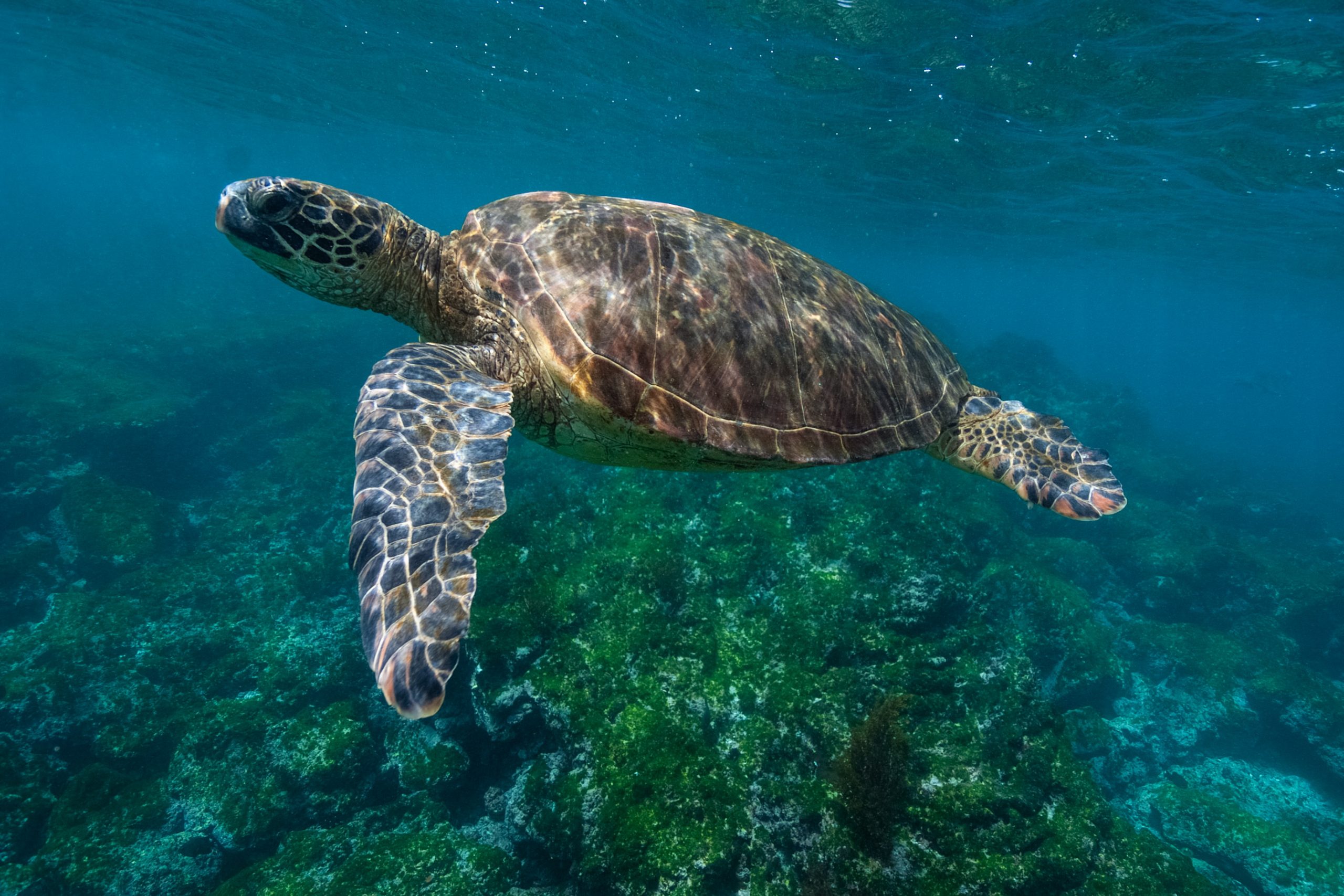
Making use of drones, scientists from the CDF have been able to measure the population and distribution of sea turtles and observe and study their behavior in different settings.
In 2022, a one month pilot study was conducted to assess whether the presence of vessels in front of Las Bachas beach – a key nesting site – correlates with the number of female turtles arriving at the beach at night. A hydrophone recorded underwater noise and a vessel monitoring system quantified movement. Over the 30 day period of the study, 617 turtles visited the beach, with an average of 20 females arriving on the beach every night. On the nights when vessel movement was detected in front of the nesting beach, the number of turtles arriving decreased by 40%, suggesting a significant link between marine traffic and turtle nesting behavior.
Studies such as these play an important part in helping the Galapagos authorities regulate tourism and vessel movements to protect the local wildlife and help it to continue to thrive.
CONSERVATION PROJECTS
Land bird Conservation Project of threatened populations of small land birds
There are 28 endemic species of small land bird in the Galapagos Islands, including 17 species of Darwin’s famous finches and four types of the charismatic mockingbird. Despite extensive studies on finch evolution, surprisingly little is known about the number of birds on each island and their health status, so work is ongoing to gather more data and better help protect these vulnerable land birds from threats to their survival.
The Little Vermilion Flycatcher
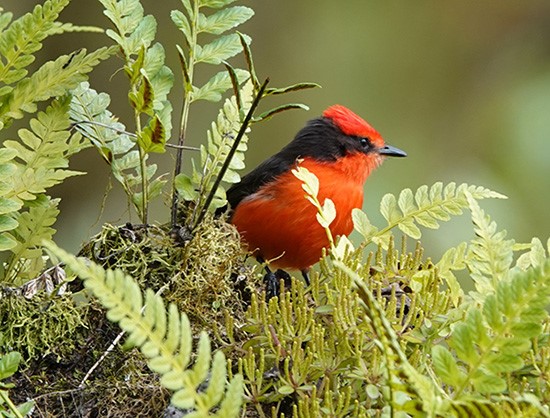
The Little Vermilion Flycatcher (otherwise known as “Darwin’s flycatcher”) is endemic to the Galapagos Islands and is listed as “Vulnerable” by the International Union for Conservation of Nature (IUCN). Indeed on the islands of Floreana and Santa Fé, the species is locally extinct.
A land bird conservation program is underway on the island of Santa Cruz and a small population of approximately 30 individuals – or 15 pairs – of the Little Vermilion Flycatcher live in the Scalesia forest in the highlands.
The CDF’s land bird conservation team has recently presided over a successful 2023 nesting season, reporting the great news that 12 new juvenile Little Vermilion Flycatchers successfully fledged this year. The experimental management program of this species started in 2018 and has gone from strength to strength. Six fledglings arrived in 2020, eight in 2021, and seven in 2022, making 2023 – with 12 fledgings – the most successful nesting season yet.
The Mangrove Finch
The Mangrove Finch is one of the 13 species of “Darwin’s finches” that exist only in the Galapagos Islands. It is the rarest bird in the archipelago with an estimated population of less than 100 individuals inhabiting just 30 hectares across two locations on Isabela Island. The Mangrove Finch is classified as critically endangered by the IUCN, and has suffered noticeable decline in large part due to its two main known threats, the avian vampire fly and the black rat – both species that have been introduced to the islands.
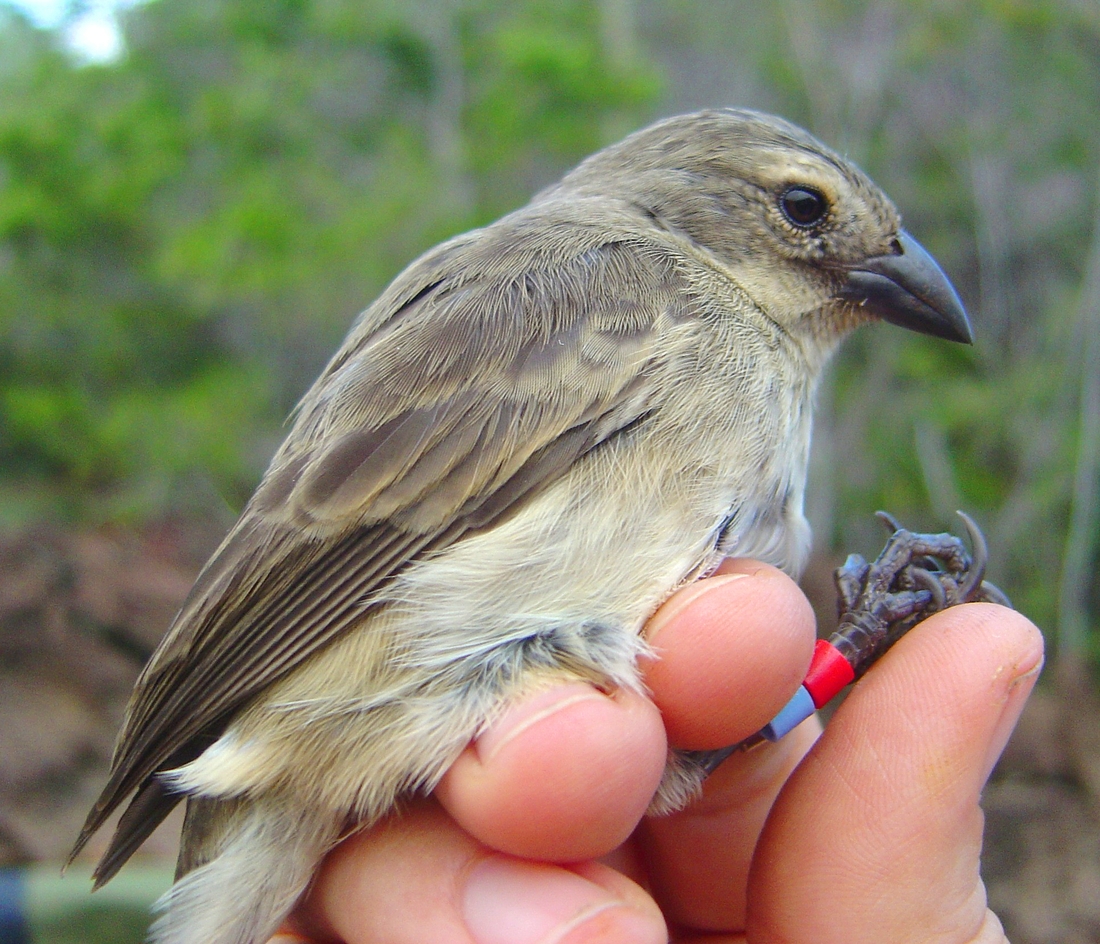
Image courtesy of the Charles Darwin Foundation
The CDF’s Mangrove Finch Conservation Team has masterminded one of the most successful seasons since the conservation project, led by the CDF in collaboration with the Galapagos National Park, began in 2007. 18 strong and healthy youngsters have fledged successfully from a total of nine nests during this 2023 breeding season – a brilliant result that augurs well for the long term survival of these beautiful creatures.
EDUCATION PROJECTS
Community Outreach Program
The CDF’s community outreach program engages students in hands-on experiences, educating them on environmental issues and encouraging them to think critically and creatively about sustainable practices. The program provides a way for students to connect with their local environment, enabling them to become agents of positive change in their communities.
Science Club – Shark Ambassadors
Designed with 14 to 18 year olds in mind, this program aims to foster a sense of curiosity and nurture a keen interest in the natural world. It offers young people a platform from which to develop their leadership skills and become advocates for environmental change in their communities. Our Science Club was a great success this year in Santa Cruz, with 25 youth participants taking part in 75 events, including activities designed in collaboration with CDF scientists. The Science Club was formally launched on Isabela Island and saw 30 young participants involved in seven experiential outings related to sharks, sea turtles, and bird watching.
Summer Club
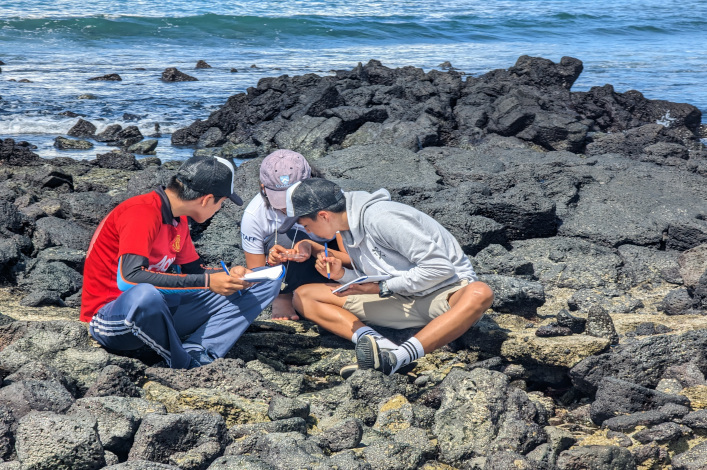
Image courtesy of the Charles Darwin Foundation
In 2022 the CDF piloted the Summer Club for 13 to 15 year olds in Santa Cruz. Students were given the opportunity to involve themselves in marine and terrestrial research projects, taking part in experiential learning activities while connecting with nature during the summer break. 12 students participated in 10 events led by 4 ‘Shark Leaders’. Following the success of the inaugural Summer Club, it will return in a similar format in summer 2023.
Do your bit
If you would like to help safeguard the Galapagos, one of our world’s greatest natural treasures, make a donation today via the CDF website www.darwinfoundation.org. All support is very gratefully received and goes directly towards supporting the scientists’ work at the Charles Darwin Research Station.
And if you would like to visit the Galapagos yourself to see the islands, and their feathered, finned and four-legged inhabitants first hand, please do contact our team and we will be delighted to help put together a trip of a lifetime.




